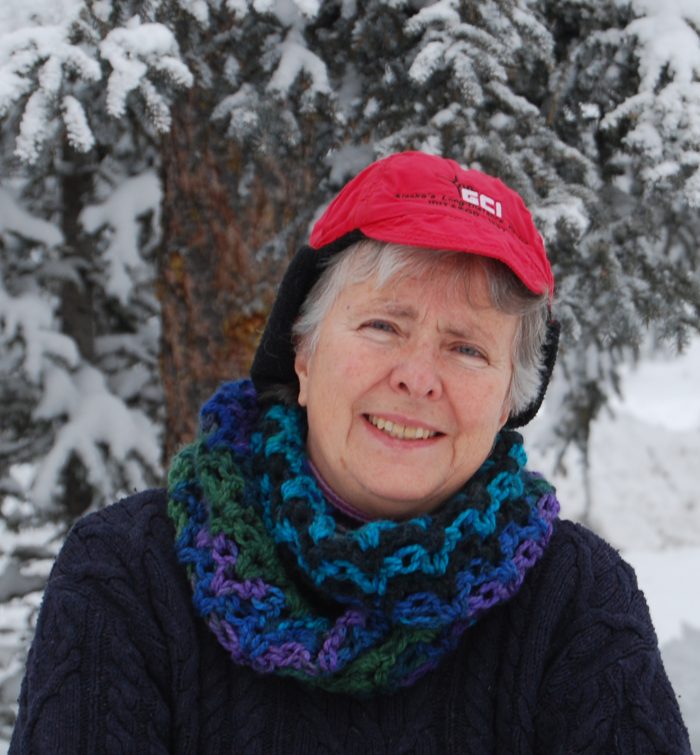Cheered on by readers who told me that an essay dedicated to old friend Norman Wilkins “worked,” though it was written in various moods and moments over about 20 years, I’m going to take a moment to finger that miracle. The essay is a small bucket of improbables—love for the consummate knowledge of two woodsman friends, a mix of ambivalence and high regard for trappers and trapping in general, wonderment about who we are in regards to wild animals and wild country. I wanted to celebrate a certain month of the year like no other in the “land of little sticks,” i.e. the surface-soaked high Copper Basin when, for a month or so, easy access opens for people like me to travel and watch and consider.
The first impulse for writing was a journal entry, thinking about Norman in a certain time and place where he was happiest at the apex of his life, although he had multiple lives preceding that one. Later, I wanted to consider those earlier lives too. And to honor our Ahtna friends who made trails before Norman’s trails. And what I thought it meant to Norman to build a cabin, which led us to build a cabin, then cabins. Oh, and about what brought us on the trail with Norman. That made me want to write back into our lives and our parents’ lives too. So I did.
You know when you are teaching and a student brings you an essay which is supposed to be about his dog but starts with the creation of the universe and you tell him to just cut to the dog and start there?
So, not to belabor this, but I didn’t actually have what you might call an essay. First, I had that journal entry that I shared with Norman while he still lived here. Later when he was getting sick in Minnesota and his daughter was collecting and publishing his journals, I wrote a very long letter to her that circled around the first writing but that I never sent to her because by that time it also contained the above-mentioned ambivalence and some self-examination that would not have been useful in any way to Norman or his daughter. Then I had chunks of writing I’d added to those materials every time I revisited them.
I’m not a very disciplined writer and therefore not very prolific, though like everyone else I’m trying to get better before I die. Subjects haunt me into writing about them, usually because there are connections I don’t fully understand but have somehow come to trust are there. So it is that if the kid with the dog essay that starts with the big bang comes to me now, I just tell him there’s probably a connection and it would be very interesting to himself and maybe to a reader if he figures out what it is.
“March,” nominally about a season but really for Norman and actually for me, had several first person present tense narrators and a few opinionated first and third person past tense narrators by this time, layered back into the past like Schlieman’s excavation of Troy. Each narrator had something I wanted to examine and didn’t want to kill, so every time I worked on the essay I just rearranged the pieces. Finally, I just started the essay out by putting the reader on notice that the season itself, March, was access to a suspension of time and limitation. And then I allowed the earliest first person narrator, travelling the trap line with Jim and Norman, to surround and frame all the later voices and points of view.
Despite my opening disclaimer, all the transitions still jarred and were not going to be solved by the insertion of artistic white space. I tried to trust the connections I knew were there and use language that relocated the reader—in the season, on the long-ago trail, in the life of our near-ancestors. A present time narrator telling a long ago present time story has an odd voice, saying, for example, “there aren’t any phones in our pockets yet.”
These days, I would not be as passive a companion as I was thirty years ago. The latest narrator of this essay is heartsick at a natural world imperiled by human fault, questioning every footstep even as she tries to accept the harm that is both habit and birthright of our species.
But I can’t get at this sense of loss without also including in the essay the long-ago young woman who watched the woodsmen and listened to them talking and accepted their gifts. And that is why this voice finds itself both in the past and in the now: “All I have to do is reach out for a big cup of coffee or cocoa when Norman hands it to me. There won’t always be these big broken-knuckled hands, I know this even then.”
Thanks to the generosity of Alaska Quarterly Review, where “March” appears in the 2017 winter/spring issue, and co-hosts 49Writers, Alaska Humanities Forum, and Center for the Lyric and Narrative Arts, I’ll read from the essay TONIGHT, February 24, 2017, at the Great Harvest Bread Company in Anchorage.
Mary Odden’s essays have appeared in The Georgia Review, Northwest Review, Nimrod, Alaska Quarterly Review, and in a collection of writing and art, Under Northern Lights, edited by Frank Soos and Kes Woodward. A book of essays, Mostly Water: Rural and North, will be published by Red Hen Press.


